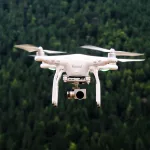Facial Recognition as a Service vs. In-House Security Measures: Which is Better?
Facial Recognition as a Service vs. In-House Security Measures: Which is Better?
Security is a top priority for any organization, and the use of facial recognition technology has become increasingly popular in recent years. But when it comes to implementing facial recognition, businesses have two options: Facial Recognition as a Service (FRaaS) or in-house security measures. Both options have their advantages and disadvantages, so which one is better for your business? In this article, we’ll compare FRaaS and in-house security measures to help you make an informed decision.
when it comes to choosing between FRaaS and in-house security measures, it’s important to carefully consider your business’s specific needs and budget. Both options have their advantages and disadvantages, so take the time to evaluate them carefully before making a decision. By doing so, you’ll be able to choose the best option for your business and ensure that your data is secure.


FRaaS: Convenience and Cost-effectiveness
Facial Recognition as a Service is a cloud-based solution that allows businesses to use facial recognition technology without having to invest in the hardware and software necessary to run it in-house. FRaaS providers offer a range of services, from simple face detection to more advanced features such as face comparison and identification.
One of the main advantages of FRaaS is its convenience. Since the technology is cloud-based, businesses can access it from anywhere with an internet connection. This makes it an ideal solution for companies with multiple locations or employees who work remotely.
FRaaS is also cost-effective since businesses only pay for the services they use, and there is no need to invest in expensive hardware and software. This makes it an attractive option for small businesses or those with limited budgets.
However, there are also some disadvantages to FRaaS. Since the technology is hosted on a third-party server, businesses may have concerns about the security and privacy of their data. In addition, businesses may not have as much control over the technology as they would with in-house security measures.
In-House Security Measures: Control and Customization
In-house security measures involve businesses purchasing and installing the necessary hardware and software to run facial recognition technology on their own servers. This gives businesses complete control over the technology and the data it collects.
One of the main advantages of in-house security measures is the level of control and customization they offer. Businesses can tailor the technology to their specific needs and integrate it with other security measures they may already have in place. This allows for a more comprehensive security solution.
In-house security measures also give businesses greater control over the security and privacy of their data. Since the technology is hosted on their own servers, they can ensure that their data is secure and that only authorized personnel have access to it.
However, in-house security measures can be expensive, and businesses may need to hire specialized staff to manage the technology. This can be a barrier for smaller businesses or those with limited budgets.
Which is Better for Your Business?
When it comes to deciding between FRaaS and in-house security measures, there is no one-size-fits-all answer. Both options have their advantages and disadvantages, and the best choice for your business will depend on your specific needs and budget.
If convenience and cost-effectiveness are your top priorities, then FRaaS may be the best option for you. However, if you require a more customized and comprehensive security solution, then in-house security measures may be the better choice.
It’s important to consider the security and privacy of your data when making this decision. If you have concerns about the security of your data, then in-house security measures may be the better option since you have greater control over the technology and the data it collects.
Our AI as a Service E-Book is the ultimate guide to understanding and using AI in your business. It provides an in-depth look at how artificial intelligence (AI) can be used to create new opportunities and improve customer experiences. It offers practical advice on how to implement AI into your business, as well as detailed case studies of successful businesses that have done so. With our E-Book, you will gain invaluable knowledge that will help you stay ahead of the competition and make smarter decisions for your business. Download it today to get started on your journey towards success with AI!
Q&A

What is Facial Recognition as a Service?
Facial Recognition as a Service (FRaaS) is a cloud-based facial recognition solution provided by third-party vendors. It allows businesses to use facial recognition technology without having to develop their own system.
How does FRaaS work?
FRaaS works by using algorithms to analyze facial features and patterns, creating a unique facial signature. This signature is then compared to a database of known faces to identify individuals.
What are the benefits of using FRaaS?
The benefits of using FRaaS include cost-effectiveness, scalability, and ease of use. With FRaaS, businesses can avoid the upfront costs of building their own facial recognition system, and can easily scale up or down depending on their needs.
What are the potential drawbacks of using FRaaS?
The potential drawbacks of using FRaaS include data privacy concerns and potential security vulnerabilities. As FRaaS relies on cloud storage, there is a risk that facial recognition data could be compromised by hackers.
What are in-house security measures?
In-house security measures refer to security systems that are developed and maintained by a business in-house. This can include physical security measures, such as security cameras and access control systems, as well as digital security measures, such as firewalls and encryption.
What are the benefits of using in-house security measures?
The benefits of using in-house security measures include greater control over security systems and data, as well as greater customization to meet specific business needs.
What are the potential drawbacks of using in-house security measures?
The potential drawbacks of using in-house security measures include higher costs for development and maintenance, as well as the need for specialized expertise to implement and maintain the system.
Which is better, FRaaS or in-house security measures?
The answer depends on the specific needs and resources of the business. FRaaS may be a more cost-effective and scalable option for smaller businesses, while larger businesses with more resources may benefit from the greater control and customization of in-house security measures.
Can FRaaS be integrated with in-house security measures?
Yes, FRaaS can be integrated with in-house security measures to provide an additional layer of security. For example, facial recognition can be used in conjunction with access control systems to provide secure entry to a building or restricted area.
What are some best practices for implementing FRaaS or in-house security measures?
Best practices for implementing FRaaS or in-house security measures include conducting a thorough risk assessment, involving stakeholders in the planning process, and regularly reviewing and updating security measures to address new threats and vulnerabilities. It is also important to ensure compliance with relevant regulations and data privacy laws.





